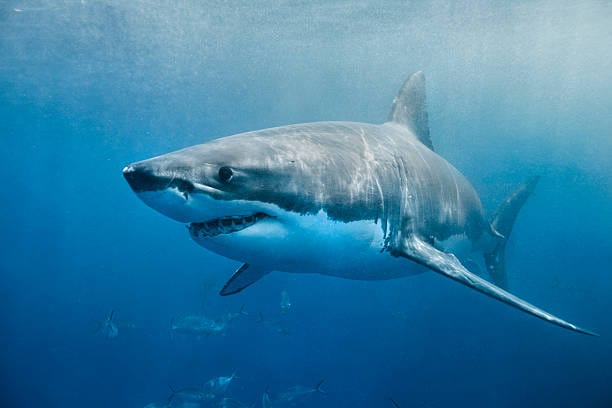Beneath the dark, endless reaches of the world’s oceans glides a creature whose very presence commands awe—and fear. The shark is not simply a predator; it is a masterpiece of evolution, a streamlined sentinel of the sea honed over hundreds of millions of years. Among its many astonishing adaptations, two stand out for their eerie precision: an uncanny ability to detect the faintest traces of blood in the water, and a sixth sense that allows it to perceive the electric fields of living organisms. These capabilities, mysterious and formidable, elevate sharks beyond mere hunters—they are sensory marvels whose biology reads like science fiction, but whose mechanisms are grounded firmly in science.
Understanding how sharks sense their environment brings us closer to unraveling the secrets of survival in the deep. It is a journey into the interface between biology and physics, where nerve endings and molecular receptors interpret the invisible signals of life itself. To truly grasp how sharks hunt and navigate, we must dive beneath the surface—both literally and figuratively—into a realm ruled not by vision or sound, but by chemical and electrical whispers that only sharks can hear.
Smelling the Ocean: The Chemical Trail of Blood
For many, the word “shark” instantly evokes the image of blood swirling through saltwater. It is not just popular myth that connects sharks to the scent of blood—it is scientific fact. Sharks are equipped with one of the most finely tuned olfactory systems in the animal kingdom. Their sense of smell allows them to detect blood in concentrations as low as one part per ten billion, equivalent to a single drop in an Olympic-sized swimming pool.
This extraordinary ability is due to a highly specialized set of olfactory organs located in paired sacs beneath the snout. Water enters these sacs through external nostrils, or nares, which are entirely separate from the mouth and are used exclusively for smelling. Inside the sacs, water passes over folded epithelial structures known as lamellae. These are lined with millions of olfactory receptor neurons—cells equipped with proteins that bind to specific chemical compounds.
When a molecule of blood, rich in amino acids and proteins, contacts a receptor, it initiates a cascade of biochemical reactions that generate an electrical signal. This signal travels along the olfactory nerve to the shark’s brain, where it is processed and interpreted. Crucially, this system is not just sensitive but directional. Each nostril receives chemical input independently, allowing sharks to determine the direction of a scent trail with astonishing precision. They literally “smell in stereo,” which helps them locate the source of blood even from kilometers away.
Different species of sharks exhibit variations in olfactory sensitivity depending on their ecological niches. For instance, deep-sea sharks rely more heavily on smell than sight, while reef-dwelling species may integrate smell with vision or hearing. But across the board, the olfactory system remains one of the shark’s most powerful tools for hunting, mating, and detecting danger.
The Blood Signal: What Sharks Are Really Smelling
Contrary to popular belief, sharks are not indiscriminately attracted to any kind of blood. What they respond to are the specific chemical cues associated with distressed or injured prey. Fish blood, for example, contains high levels of amino acids like serine, alanine, and histidine, which are particularly potent stimuli for sharks. Human blood, by contrast, lacks some of the olfactory cues that sharks are evolutionarily wired to recognize. This is one reason why many shark species are indifferent to human presence unless other conditions trigger their predatory instincts.
Moreover, sharks are capable of discriminating between species, health status, and even levels of stress based on subtle differences in chemical signatures. A wounded fish releases not only blood but also alarm pheromones—chemical distress signals that sharks can pick up. These cues provide a fuller context than blood alone, allowing sharks to assess whether a target is vulnerable and worth pursuing.
Interestingly, female sharks ready to mate also release specific pheromones into the water that can attract males from considerable distances. Thus, the olfactory system plays roles far beyond feeding—it is central to reproduction, social interaction, and even navigation, as some evidence suggests sharks may use olfactory cues to migrate across vast ocean distances.
A Sixth Sense in the Sea: The Electrosensory System
While smell guides sharks over long distances, their most mysterious and intimate sense lies in their ability to detect the invisible pulses of electricity emitted by every living thing. This electrosensory ability is unlike anything found in humans and is enabled by a network of specialized organs called the ampullae of Lorenzini.
First described in the 17th century by Italian anatomist Stefano Lorenzini, these jelly-filled pores are clustered around the shark’s snout and head. Each pore opens to the seawater and connects to a canal that leads to a sensory bulb rich in electroreceptor cells. These cells are capable of detecting incredibly weak electrical fields—down to just 5 nanovolts per centimeter, a level of sensitivity that boggles the imagination.
All animals generate bioelectric fields through the action of nerves and muscles. Even a fish lying still on the ocean floor emits a faint electric aura. Sharks can sense these fields with pinpoint accuracy, allowing them to detect prey buried under sand, locate hidden animals in murky waters, and even navigate using the Earth’s magnetic field.
Decoding the Electrical Landscape
To understand how this sensory system works, we must delve into the physics of ion flow and nerve conduction. When an animal’s muscles contract or its heart beats, ions like potassium and sodium move across cell membranes, creating small electrical currents. In water, particularly saltwater, these currents generate electrical fields that can propagate over short distances. Sharks detect the voltage differences these fields create as they cross the ampullae.
When an electrical field interacts with the jelly inside the ampullary canal, it causes a minute voltage shift across the membrane of the electroreceptor cell. This leads to a change in the rate of neurotransmitter release, which is translated into a nerve impulse and sent to the shark’s brain. The pattern and strength of the impulses help the shark determine not only the presence of an electric field but also its direction and intensity.
Experiments have shown that sharks can distinguish between the electrical patterns of different animals and can even tell the difference between a live fish and a dead one based solely on electrical output. This ability gives them a distinct advantage in environments where visibility is poor or where prey may attempt to hide or camouflage themselves.
Electricity as a Weapon Detector
The electrosensory system does more than aid in hunting—it also protects sharks from danger. Some of their natural prey, like rays or electric eels, can deliver painful or lethal electric shocks. By detecting and interpreting the electrical emissions of other creatures, sharks can avoid dangerous encounters or approach with caution. In some cases, predators may even use these signals to recognize the reproductive or social status of other individuals.
Moreover, the ability to detect Earth’s geomagnetic field has sparked theories that sharks use electrosensation for long-distance migration. Species such as the great white and the salmon shark undertake epic journeys across ocean basins, and their internal compass may be tuned to electromagnetic gradients on the seafloor. Though this remains an area of active research, the evidence suggests that sharks are not just passively sensing local fields—they are actively reading and interpreting the electromagnetic map of the ocean.
When Senses Collide: Multimodal Hunting Strategies
Although olfaction and electrosensation are powerful tools in their own right, sharks rarely rely on a single sense when hunting. Instead, they integrate input from multiple sensory systems—including vision, hearing, lateral line mechanoreception, smell, and electroreception—into a coordinated behavioral response. This multimodal approach makes them incredibly efficient and adaptable predators.
In the early stages of a hunt, chemical cues often serve as the first alert. A drop of blood or a burst of amino acids from a wounded fish can initiate investigative behavior, prompting the shark to swim upcurrent and seek the source. As the shark approaches, it begins to pick up on visual and auditory cues: the shimmer of scales, the flicker of movement, the low-frequency thrum of struggling muscles.
Once within a meter or so, the electrosensory system takes over. Now, the shark can detect the faint electrical signature of the prey’s heartbeat or gill movement. This final layer of sensory data allows for a precise strike, even if the prey is camouflaged or partially hidden. In this way, the shark’s brain orchestrates a symphony of perception, each sense entering at the right moment to build a complete, dynamic picture of its environment.
A Design Forged in Deep Time
What makes the shark’s sensory systems even more impressive is their antiquity. Sharks have roamed the oceans for more than 400 million years, predating the dinosaurs, birds, and even trees. Over this immense stretch of time, natural selection has sculpted a suite of senses so refined and so effective that many modern technologies still struggle to match them.
The ampullae of Lorenzini, for instance, are not found in mammals or birds. They are ancient features of cartilaginous fish, shared with rays and skates, and are among the oldest known electrosensory systems in vertebrates. Similarly, the extraordinary sensitivity of the olfactory system is the result of tens of millions of years of fine-tuning, with each receptor type shaped to recognize ecologically meaningful molecules.
This evolutionary legacy is not just a curiosity—it is a blueprint. Scientists are now studying shark sensory biology to develop new types of underwater sensors, chemical detectors, and even biomedical devices. The shark’s electroreceptors, for example, have inspired research into passive electrical sensors for submarine navigation and search-and-rescue missions.
Misunderstood and Endangered
Despite their scientific importance and evolutionary marvel, sharks are among the most misunderstood and threatened animals on Earth. Popular media often portrays them as mindless killers, but the truth is far more nuanced. Sharks are apex predators that play vital roles in maintaining healthy marine ecosystems. By regulating prey populations and promoting biodiversity, they help ensure the resilience of coral reefs, seagrass beds, and open ocean food webs.
Yet millions of sharks are killed each year for their fins, meat, or simply as bycatch. Many species are now endangered, and some are on the brink of extinction. Understanding how sharks perceive and interact with their environment is not just a scientific quest—it is a conservation imperative. Protecting these animals means protecting the sensory landscapes they rely on: clean water, abundant prey, and intact electromagnetic habitats unpolluted by human interference.
The Future of Sensory Science
As ocean exploration advances, scientists are discovering new shark species and revealing surprising variations in sensory biology. Some sharks use bioluminescence to communicate or hunt, while others navigate by scent trails that span hundreds of kilometers. With technologies like functional MRI, telemetry, and electrophysiology, we are beginning to decode the neural pathways that underlie these extraordinary abilities.
There is much we still do not know. How do sharks distinguish between overlapping electric fields? Can they learn to associate new smells with specific outcomes? Do different species have different sensory hierarchies? Each question opens a door not only to deeper biological understanding but also to technological innovation and ecological insight.
By studying how sharks sense blood and electricity in the water, we gain more than knowledge of a single group of animals. We gain a window into the rich, unseen dimensions of the ocean itself—a world alive with scent, spark, and signal, waiting to be heard.
Echoes in the Deep
In the final analysis, sharks do not just see their world—they feel it, smell it, and sense it in ways we can barely comprehend. They read the invisible lines of life drawn in scent and current, magnetism and motion. Their perceptions are not bound by light or sound but extend into realms where most animals, including humans, are blind.
To swim as a shark swims is to move through an ocean of information, where every heartbeat emits a signal, every drop of blood tells a story, and every flicker of voltage marks the presence of life. It is a reminder that the natural world is not just what we can see, but what we have yet to sense.
And in that deep, electric silence, sharks remain the silent sentinels of a world still filled with mystery, still echoing with the rhythm of evolution’s finest designs.






